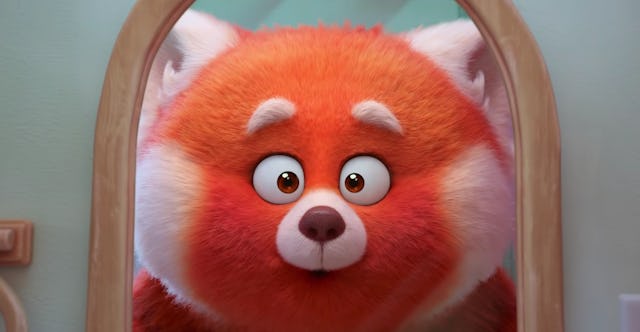I Was A Red Panda, Too
I had no problem using my voice, unleashing my anger, and airing my indignations.

It feels as if Turning Red, the new Pixar movie, was made just for me. You see, I was born a red panda — someone who always had the ability to express my big emotions. Growing up, I had no problem using my voice, unleashing my anger, and airing my indignations. I never needed to turn into a red panda; I lived life in that elevated state.
In the movie, 13-year-old Mei Mei transforms into a giant red panda, symbolizing two central parts of adolescence: the physical changes kids go through during puberty and the outsized emotions kids experience during the tween and teen years. And while it is thrilling to see puberty depicted in an animated movie, the way the director, Domee Shi, approaches the complex emotional life of adolescents resonated with me deeply.
I was always loud, emotional, and sensitive. Long before puberty, my big feelings — hurt, anger, frustration — resisted containment. It was clear how I felt about most everything because it was written all over my face, clearly evident in my body language, and in case you missed all that, I would tell you point blank. I was never in danger of keeping things in.
Did that make me easy to parent? Often not. Did my teachers appreciate it? The most common comment on my report cards was, “Vanessa needs to raise her hand less.” Did it make it comfortable to be my friend? Not always. As I matured, I learned (somewhat) how to harness my red panda for good: how to advocate effectively for my needs, how to stand up for the underdog, how to lead on a sports team. My red panda was still there, but she got a makeover.
And then I had a daughter, the only girl with three brothers. She was born a red panda too. There was no tamping down her energy or her opinions. She shouted on the soccer field. She argued with teachers in class. Unleashed her wicked humor with friends. I worry that her unique spirit will get trampled on in the journey through adolescence. I had escaped that fate, but would she?
As someone who has already tamed her red panda, seeing my daughter’s big reactions and feelings can bring up many of my own memories of that time — some good, some not so good. So when I think about helping my daughter keep her red panda, the first place I need to look is at myself. I like to hold onto some important reminders that serve to validate her big feelings without engaging with them:
- Never tell her to “calm down” or “it’s not a big deal.”
- Offer a simple sentence or two: “I’m really sorry. That sucks.”
- Avoid trying to solve whatever she’s reacting to: a sibling, a friend, a teacher.
- Ask if she’d like: some company, a hug, or privacy.
I have spent nearly a decade working with girls of all ages to help them express complicated emotions, on and off the sports field. The world tells girls to be “nice,” leaving no room for their frustration and hurt. But as Rachel Simmons, author of Curse of the Good Girl, tells us, if girls don’t learn to share their difficult feelings constructively, those feelings will instead come out sideways, in destructive and painful ways.
We don’t want our girls to repress their pain and disappointment, anger and loneliness. That road leads to secrecy, dishonesty, and shame. We want our kids to be able to talk about how they feel, even if it’s uncomfortable for the people who love them. We want our girls to trust us, their adults, to be able to handle the strength of their feelings. We want to help our adolescents learn to navigate their big emotions, not hide them. Rather than fearing our girls’ red pandas, we need to teach them how to harness them.
Vanessa Kroll Bennett is the co-host of The Puberty Podcast; the founder of Dynamo Girl, a company using sports and puberty education to empower kids; and the author of the Uncertain Parenting Newsletter, musings on raising adolescents. You can follow her on Instagram @vanessakrollbennett.